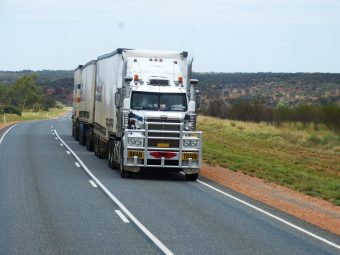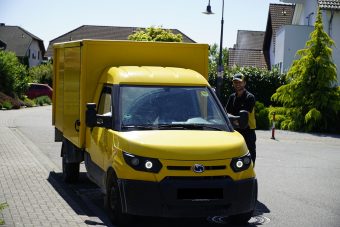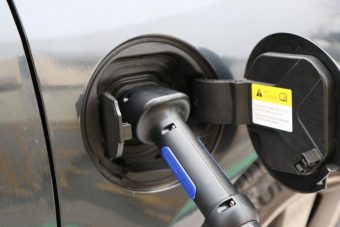
The race to decarbonize transportation is on, attested to by a global wave of commitments to electrify government and corporate fleets.
However, heavy-duty trucking presents a special challenge. While it constitutes only 1 percent of total fleet vehicles, it is responsible for a disproportionate 25 percent share of global road emissions.
Now is the time to eradicate that 25 percent, by joining together as vehicle manufacturers, infrastructure providers and governments to make heavy-duty electric trucking affordable, easy, and sustainable. Technology has made great strides, but barriers remain.
Addressing the real factors behind electric vehicle emissions
Heated debates have surrounded the sustainability of electric vehicles. The evidence is in, and it boils down to three emissions factors: car production; fuel transfer vs battery production (well-to-tank); driving emissions. In the chart below, it is evident that battery electric vehicles (BEVs) are more sustainable than conventional cars overall – ICEs (internal combustion engines – and continue to become more sustainable.
It’s also clear that the greatest factor in BEV emissions is not the batteries, but rather the electricity used to charge them. So, our race to decarbonize transportation depends on our success in decarbonizing the electrical grid.
Of course, the cleanest kilowatt is the one never produced. The numbers from Transport and Environment show that electric trucks are already more energy-efficient than diesel trucks. The chart below also shows that if the power grid included only renewable electricity, electric trucks would operate with zero emissions, while using less than half the energy of diesel trucks.
Making electric trucks affordable
Despite the growing sustainability advantage, the initial capital expenditure to purchase electric trucks and perceived cost of operation have been deterrents to logistics companies operating on slim margins.
More:
Since fuel is an enormous cost factor for long-haul trucks covering 160,000 km annually, energy efficiency plays a major role in reducing operational costs. And while BEV batteries are already 85 percent cheaper than 10 years ago, by 2030 battery costs will drop another 50 percent. At that point, according to the CEO Alliance’s HDT Truck Charging Final Report, published in April 2021, native design electric trucks will reach an economic tipping point, becoming 12 percent cheaper to purchase and operate than diesel trucks.
Providing range security
Range anxiety is another common deterrent to electrifying fleets, even though both the vehicles and charging stations are capable of delivering long range driving security.
In fact, by 2025, increased battery density will allow a 40-tonne truck to drive 400 km on a single charge. Of course, that assumes the status quo – a battery that fits into a conventional truck head. Most analysts expect BEV-native truck heads with bigger batteries to appear in the next five years, making the average long-haul trip of around 800 km possible on a single charge.

Charging technology is also much faster. It once took 2.5 hours to charge a heavy-duty electric truck. With fast chargers, charging is done over a standard compulsory break (45 minutes for every 4.5 hours of driving). By the end of the year, new megawatt charging stations will make it possible to charge even faster, providing greater capacity for charging hubs.
Digitalization and web-enabled connectivity also make charging stations more sustainable and reliable than before, allowing operators to control stations remotely, optimize energy usage and conduct routine maintenance to keep them up and running 24/7.
Universal standards
If the vehicles and charging technologies are mature, reliable, and affordable, and policymakers in the EU, US, China and many other countries are stepping up with ambitious new fleet conversion targets, why don’t we see more electric trucks on the road?
Well, first movers like Norway, Iceland and Sweden are well underway to electrifying transport nationwide, thanks to well-orchestrated roadmaps that bring together vehicle manufacturers, infrastructure providers and authorities. But once trucks cross the border, the charging infrastructure is no longer guaranteed.
Removing range anxiety for long-hauls also depends on finding compatible fast charging stations in the right places at the right times. Universal standards for both technology and regulation have been elusive in other global sustainability efforts. We can’t afford that for long-haul, heavy-duty electric trucking. Open software protocols and connection interfaces for both vehicles and chargers are critical to ensuring compatibility between vehicles and charging stations and facilitating hassle-free, long-haul driving.

Public funding and incentives
International public funding will also be an important tool in overcoming border barriers. Europe’s NextGenerationEU programme, for example, will dedicate 25 percent of its EUR 750 billion recovery budget to decarbonization projects, with sustainable infrastructure and electric transport topping its priorities. The CEO Alliance for heavy-duty vehicle charging has recommended allocating EUR 9 billion of that funding to constructing a strategic EV charging network, with 8,000 chargers along nine highways in the Trans-European Transport Network, and another 20,000 chargers at 11 regional hubs, guaranteeing a seamless essential European freight route.
In addition, stricter CO2 standards, clear carbon pricing for fuels, CAPEX support, tax rebates, and road toll discounts would help create economies of scale and a clear market rationale for fleet operators.
Stepping on the accelerator in the transportation climate race
Norway is on track to become the first nation to convert entirely to electrified transport, spearheaded by an ambitious national target of cutting its CO2 emissions by 55 percent from 1990 to 2030, and selling only zero-emission cars by 2025. Those policies are supported by incentives for EV drivers, purchasing tax exemptions, reduced tolls and ferry tickets. The country has also invested in a strategic network of high-powered fast chargers.
This gives a company like Norwegian grocer ASKO the confidence to set its own ambitious goal of electrifying its 600-truck fleet by 2026.
It’s time to make Norway the rule, not the exception. We have the technology, global public recognition of the climate crisis, and governments ready to act. We have everything we need. Let’s step on the accelerator in the transport climate race and work together to electrify heavy-duty transport now.
Source: World Economic Forum




